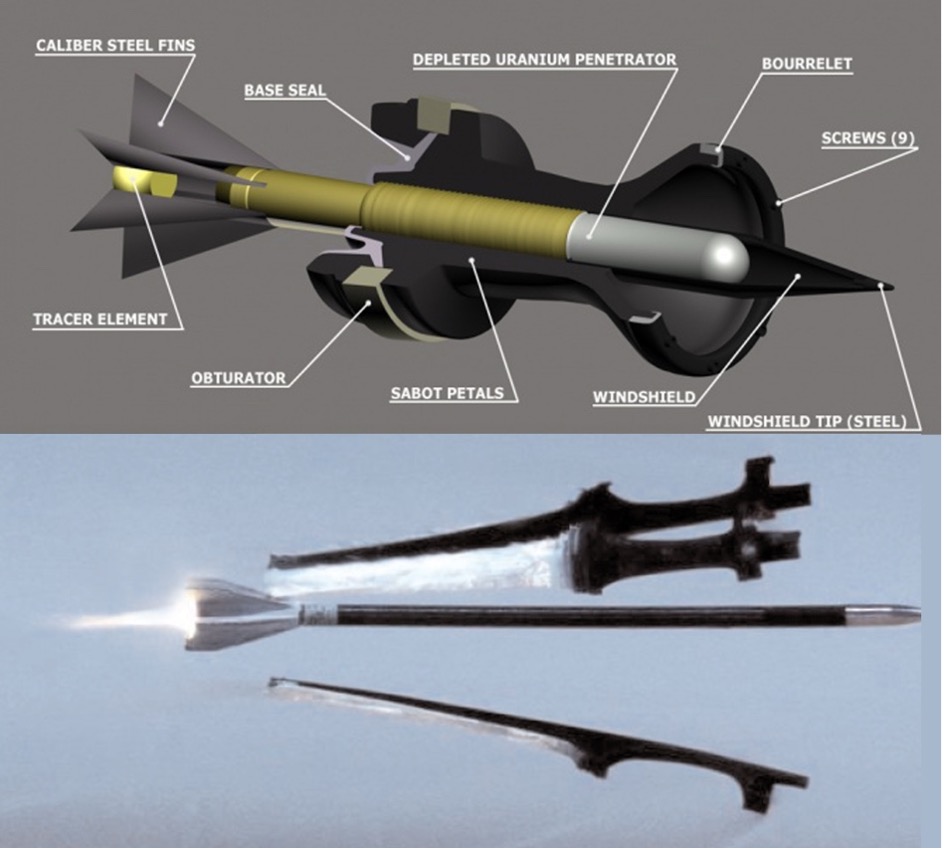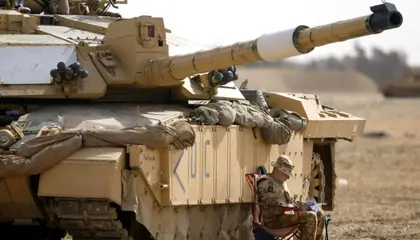The U.K. Minister of State for Defence, Annabel Goldie, has confirmed the U.K. will provide Ukraine with depleted uranium (DU) armor piercing ammunition.
“Alongside… a squadron of Challenger 2 main battle tanks to Ukraine, we will be providing ammunition including armor piercing rounds which contain depleted uranium,” Goldie reported in response to a written parliamentary question from a member of the House of Lords.
JOIN US ON TELEGRAM
Follow our coverage of the war on the @Kyivpost_official.
“Such rounds are highly effective in defeating modern tanks and armored vehicles.”
In response, Russian President Vladimir Putin told reporters after his meeting with Chinese counterpart Xi Jinping: “[The U.K.] announced not only the supply of tanks to Ukraine, but also shells with depleted uranium.
“I would like to note that if all this happens, then Russia will have to respond accordingly... The collective West is already starting to use weapons with a nuclear component.”
The U.K. Ministry of Defence (MoD) stated that Putin’s assertion was “deliberately trying to disinform” people about the nature of DU ammunition.
The material has been used in both ammunition and tank armor for decades by the U.K., the U.S. and Russia. “It is a standard component and has nothing to do with nuclear weapons or capabilities,” the MoD statement said.
DU ammunition is available in large caliber tank ammunition, as fired by the U.K. Challenger, U.S. Abrams and Russian T80/90 main battle tanks and also as canon ammunition such as the Bradley “Bushmaster” 25mm chain gun.

Russians Repurpose Old Underground Submarine Base in Crimea for Military Use
The U.S. has indicated that it will not provide DU ammunition to Ukraine.
The International Coalition to Ban Uranium Weapons (ICBUW) reported in July 2022 that Russia had increased its production of DU ammunition and was actively modernizing outdated tanks to make them capable of firing it.
What is depleted uranium (DU)?
Uranium is found in trace amounts in all rocks and soil, in water and air, and in materials made from natural substances. It is a reactive metal, and, therefore, it is not present as free uranium in the environment.
In order to produce fuel for nuclear reactors and nuclear weapons, uranium has to be “enriched” by increasing the levels of the Uranium 235 isotope, which is responsible for nuclear fission.
Depleted uranium is a by-product of the enrichment of natural uranium to make nuclear fuel. It is far less radioactive than naturally occurring uranium as it contains less of the fissionable material.
Uranium is an extremely dense metal, 1.7 times denser than lead, and this lends itself to uses where a large mass in a small volume is advantageous. It’s uses included as shielding material in nuclear reactors, counterweights in aircraft as well as its use in munitions.

Why use DU in ammunition?
It is militarily attractive because there is lots of it. In 1998 the U.S. had about 500,000 metric tons of depleted uranium in storage.
DU and other dense materials such as tungsten, are attractive as penetrators for use against tanks and other armored vehicles. Fired at high velocity, its momentum and straight trajectory makes it almost impossible to stop.
DU has greater target penetration than tungsten and is pyrophoric. As a DU penetrator strikes a target, its surface temperature increases dramatically, the surface melts and is shed which keeps the tip sharp and prevents the mushrooming effect that occurs with tungsten.
As the DU penetrates the target vehicle, the flaking of burning fragments will shred whatever is inside the tank and ignite the vehicle’s fuel and ammunition; this is known as “behind-the-target effectiveness.”
Does DU pose a health and environmental threats?
DU is a heavy metal and, like other heavy metals such as mercury, lead and tungsten, is chemically toxic if ingested in high doses. DU that remains outside the body is not harmful. However, after being fired and “cooking off” in an attack, it may pose a long-term health hazard to personnel if DU fragments or dust-like particles enter the body through wounds or if breathed in.
What about the risk of radiation from DU?
Under most exposure scenarios there is negligible radiation risk. DU is 40% less radioactive than naturally occurring uranium. The majority of the radiation it produces, alpha and beta particles, are blocked by the skin or normal clothing. The amount of highly penetrating gamma rays emitted by depleted uranium is very low. Thus, depleted uranium does not significantly add to the background radiation that we encounter every day.
You can also highlight the text and press Ctrl + Enter










